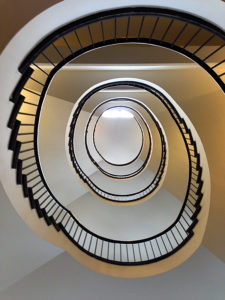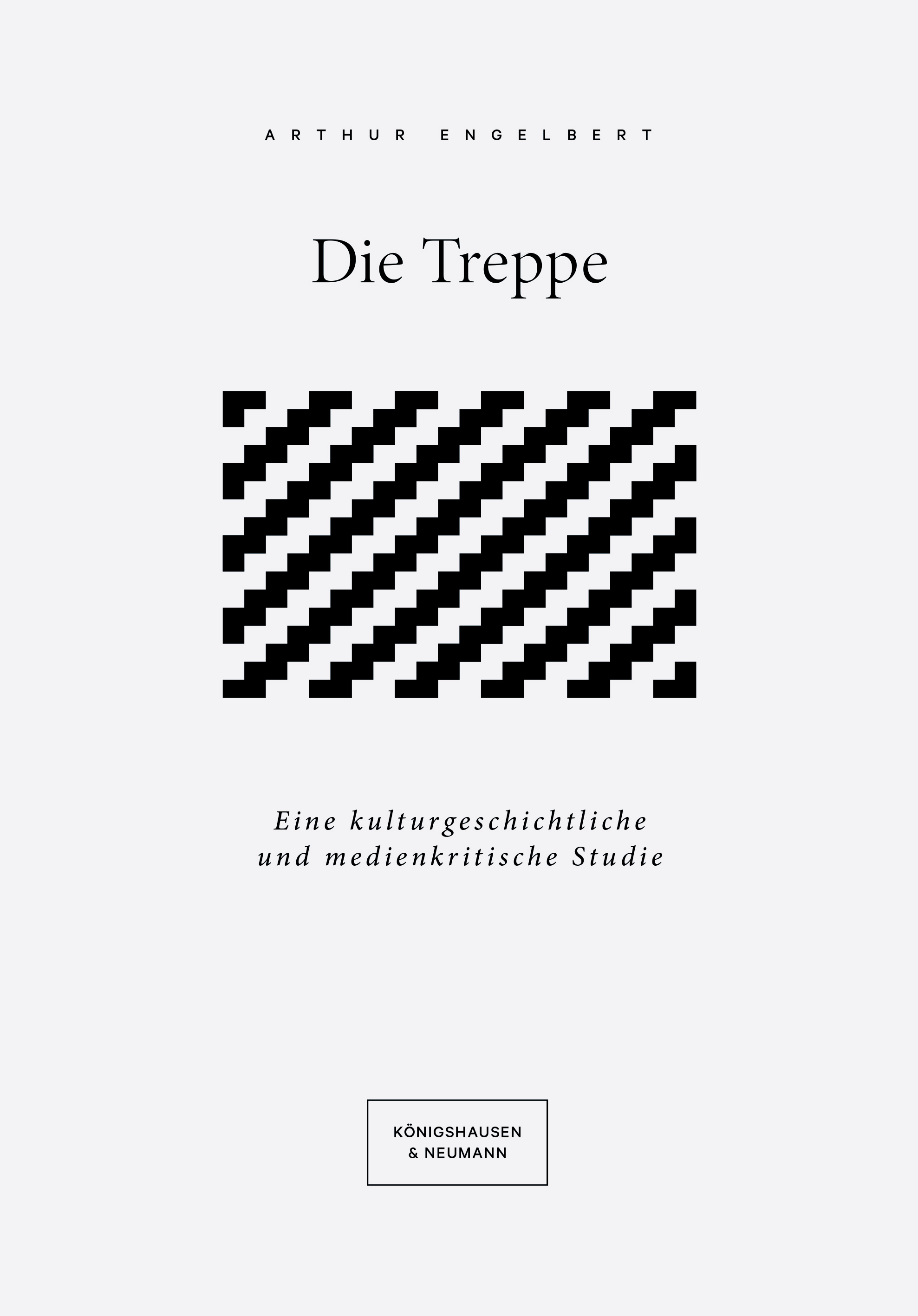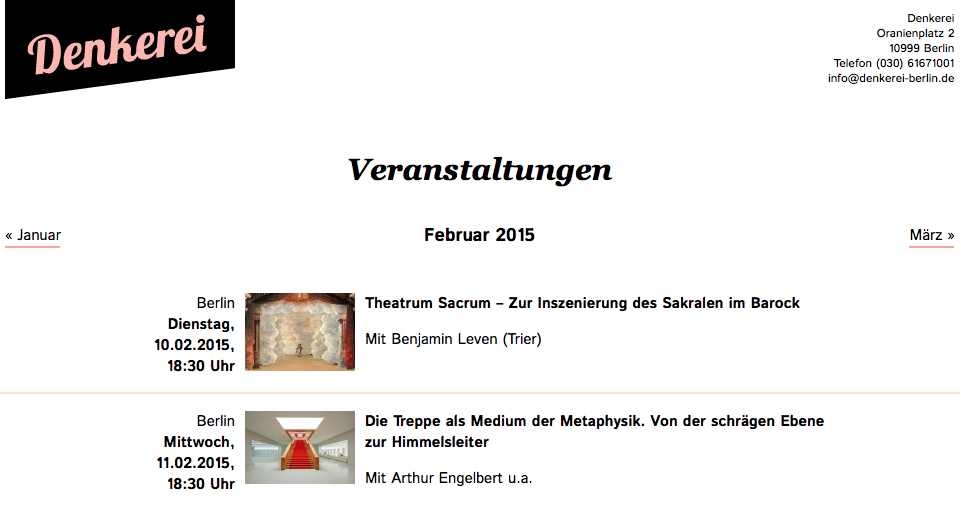
Deutschlandradio Funkhaus Berlin, Treppenhaus 2015, Foto AE
__Interview mit Max Oppel:
Treppenlauf im Empire State Building – „Die Metaphysik der Treppe“
Deutschlandradio Kultur „Kompressor – das Kulturmagazin“, 04.02.2015
__Veranstaltung: „Die Treppe“ in der Denkerei, 11.02.2015, 18.30
http://www.denkerei-berlin.de/kalender/?id=1167
__Beitrag von Dorothea Breit, WDR3 am 20.02.2015; Redaktion: Silvia Wiegand
WDR 3 Mosaik: Die Treppe. Eine kulturgeschichtliche und medienkritische Studie. Von Arthur Engelbert.
Beitrag von Dorothea Breit: Die Treppe mp3
Inhalt: Vorwort, Einführung, 6 Kapitel, 3 Intermezzi mit Treppenmotiven, Zusammenfassung, Glossar zu Treppenbegriffen, Nachwort, Literaturverzeichnis und Abbildungsnachweis, mit zahlreichen Abb. u. Skizzen und einem Anhang mit Farbabbildungen, 489 Anmerkungen, 428 Seiten
Kurzbeschreibung: In den zentralen Bereichen des Buches wird dem Leser ein Einblick in die Kultur- und Mediengeschichte der Treppe vermittelt. Es beginnt mit einem poetischen Essay zur Treppe als ein Instrument der Verbindung. Dann folgen Einzel¬studien zum Motiv der Treppe. Im Mittelpunkt stehen Beispiele aus den Kunstwissenschaften. Daraus ergeben sich Motivvergleiche und Auseinandersetzungen zur Motivwanderung der Treppe zwischen alten und neuen Medien. Am Schluss steht eine syste-matische Zusammenfassung aller angesprochenen Fragen. Großen Wert wird auf den Dialog mit dem Leser gelegt, der auch grafisch angesprochen und in unterschiedliche Themenfelder eigens eingeführt wird, d.h. die visuelle ergänzt die inhaltliche Argumentation. Die Treppe ist der durch-gängige Fokus, der die vielfältigen Aspekte und interkulturellen Diskussionsstränge hierbei bündelt und inhaltliche Verdichtungen erleichtert. Der Leser wird also stufenförmig in das Treppenstudium einbezogen. Im Wechsel der Motive – von der Treppenmadonna bis zur Verständnistreppe – gibt es von Abschnitt zu Abschnitt ein Auf und Ab wie auf einer wirk¬lichen Wendeltreppe, die zu Höhen und Tiefen führt oder in spiralförmigen Überlagerungen kulminiert, die u.a. ein Licht auf die Entstehung der Doppelhelix werfen. Somit steht die Treppe exemplarisch für das technische Bewusstsein des Menschen in der Welt – für seine Stellung in der Evolution. Sie ist Teil einer Trilogie über die Wahrnehmungsbedingungen und Gestaltungsmöglichkeiten menschlichen Daseins, die mit der Publikation „Help! Gegenseitig behindern oder helfen“ begann. Mit diesem weit gefassten Verständnis am Beispiel der Treppe kann der Leser z.B. die Idee der Fortschrittsleiter kritisch einstufen. Ganz oben auf der Sprosse der kosmischen Leiter sitzend, kann er auch eine Los¬kopplung von „Hier und Jetzt und Dort“ erwägen. Die Metapher der Treppe ist dazu notwendig, um eine denkbar andere Ebene der Realität zu erreichen – „einen Vorfall, den die Natur noch nicht kennt“.
About the publication: The central theme of this book is to give the reader an insight into the cultural and media history of the stairs. It begins with a poetical essay about stairs as an instrument of connection. This is followed by individual studies on the stair motif. The middle section contains examples out of art theory, leading to explorations and comparisons of the motif, the journey of the stairs, between old and new forms of media. It concludes through a systematic summary of all the questions that were addressed in the book. Value is placed on maintaining a dialogue with the reader, who is expressly introduced to various themata, also pictorially addressed, so that the discussion is complemented visually. The stairs is a pervasive theme, which through various facets and intercultural strands of discussion ties together and facilitates the content. The reader is therefore introduced step-by-step into studies of the stairs. In turn the motifs – from the Madonna stairs to the stairs of understanding – go up and down from passage to passage as if itself a spiral staircase, leading you to highs and lows or culminating in an overlapping spiral, which among others casts a light on the double helix formation. In this way the stairs become an example of man´s technical awareness of the world – for his position in evolution. The book is part of a trilogy about the condition of perception and design possibilities of human existence, which began with the publication “Help! Gegenseitig behindern oder helfen”. Due to the broadly conceived understanding taken in this example of the stairs, the reader is able for example to rate the idea of a ladder of progress. High above on that rung where this strange ladder rests, one can deliberate the uncoupling of the “Here and Now and There”. The metaphor of the stairs is necessary in order to reach another conceivable plain of reality – “an event, which nature does not yet know”
http://denkerei-°©‐berlin.de/kalender/?fltMonths=2015-°©‐02




